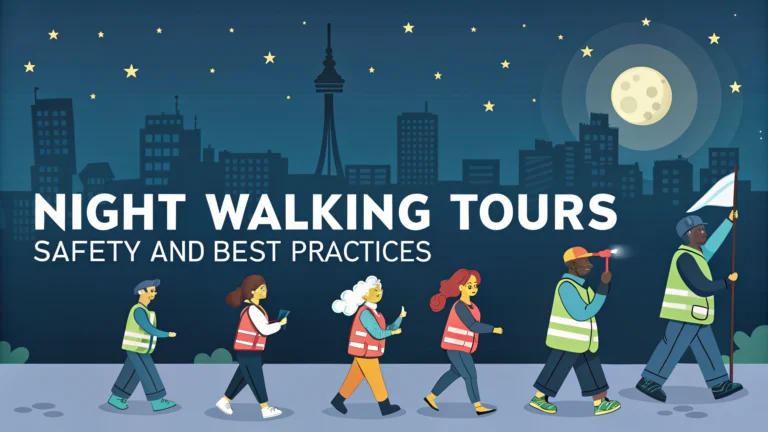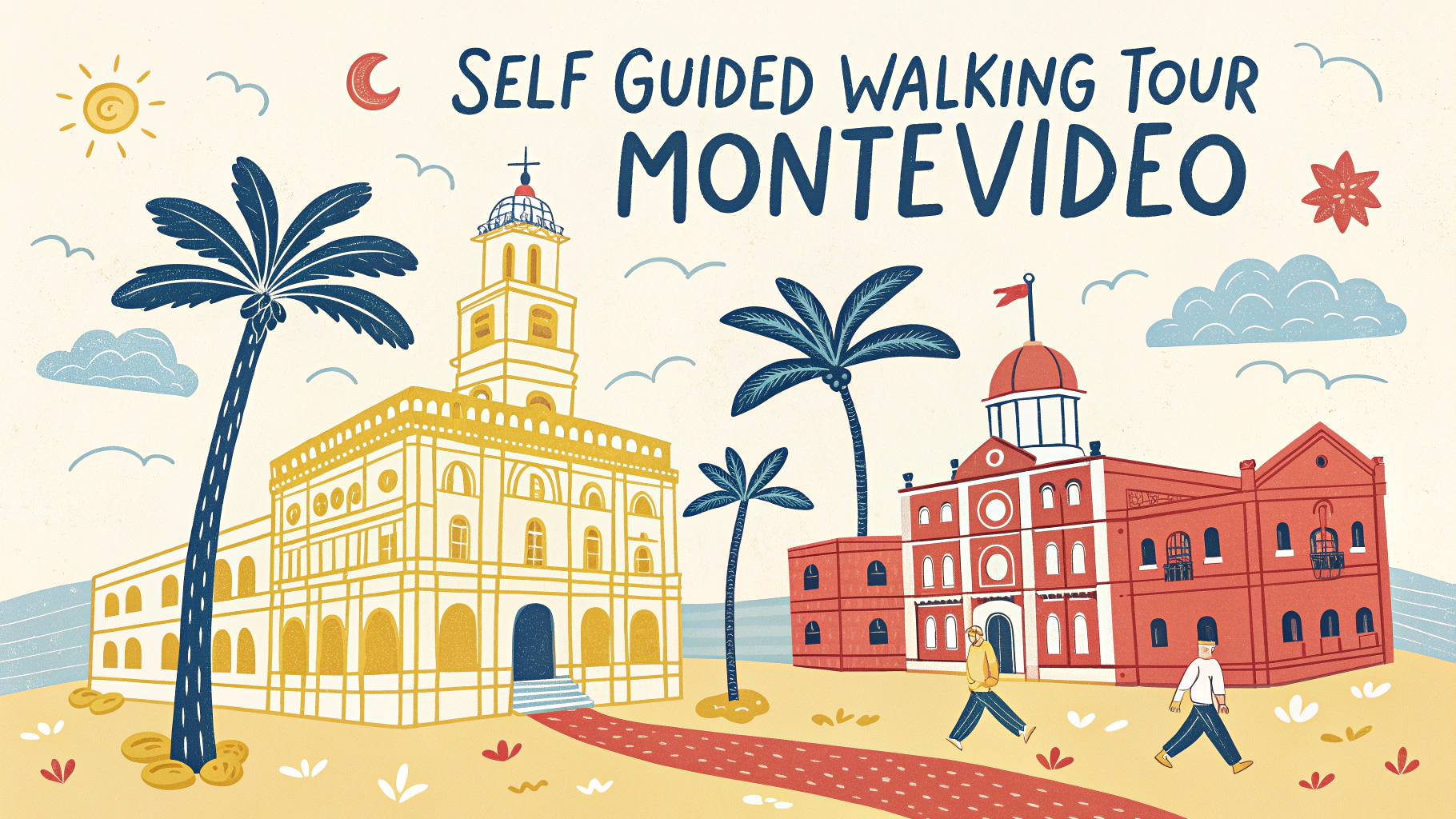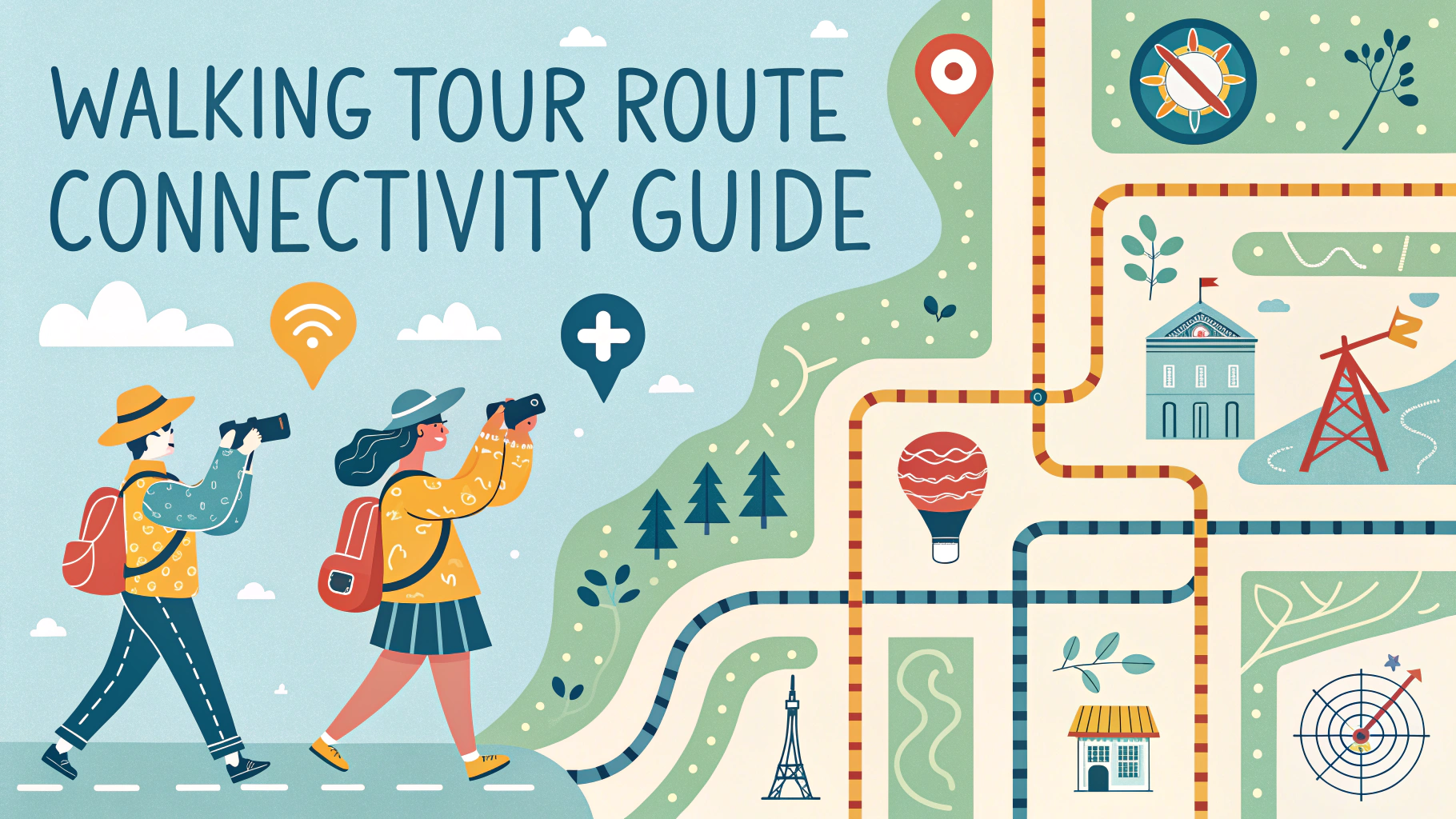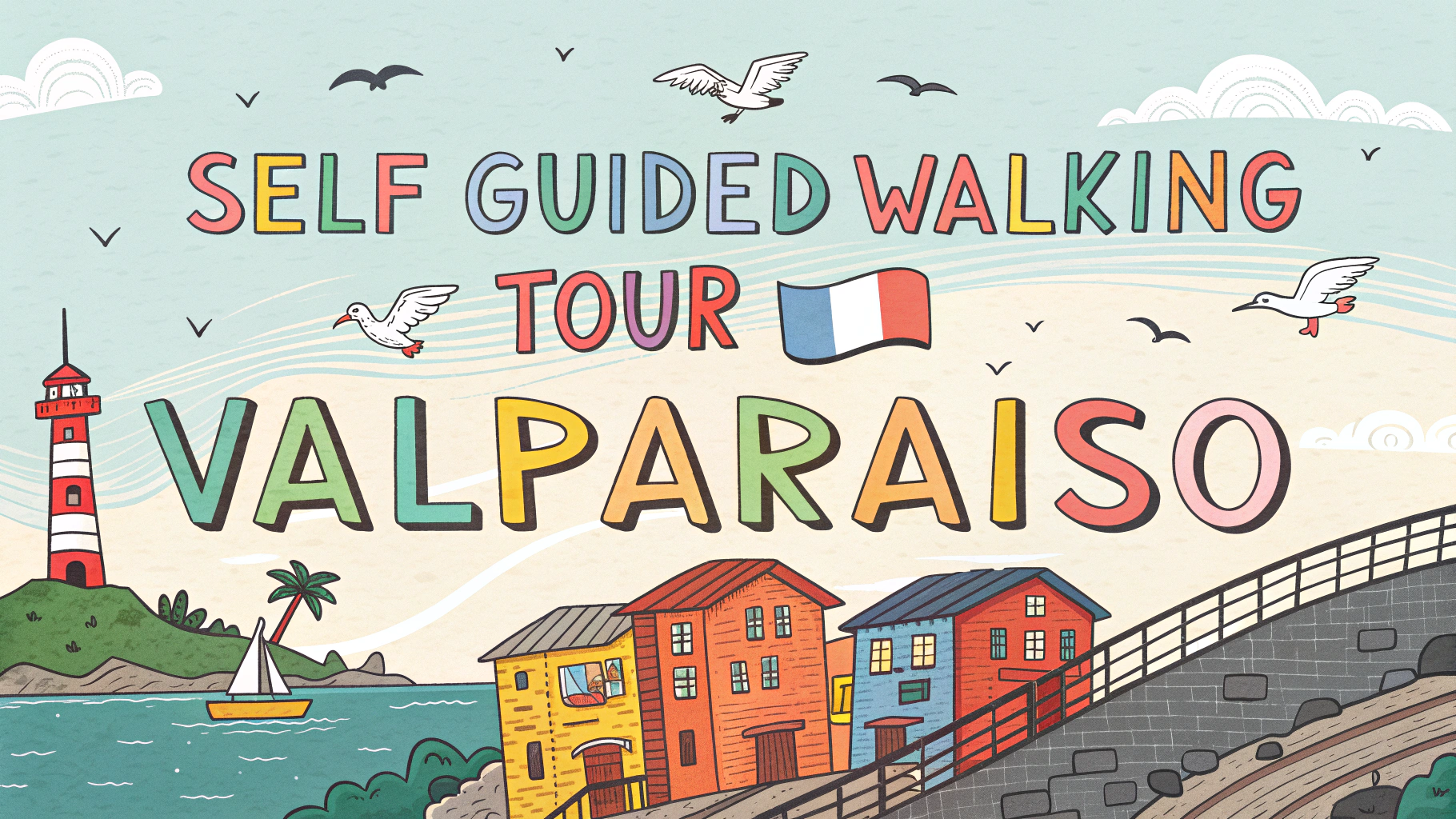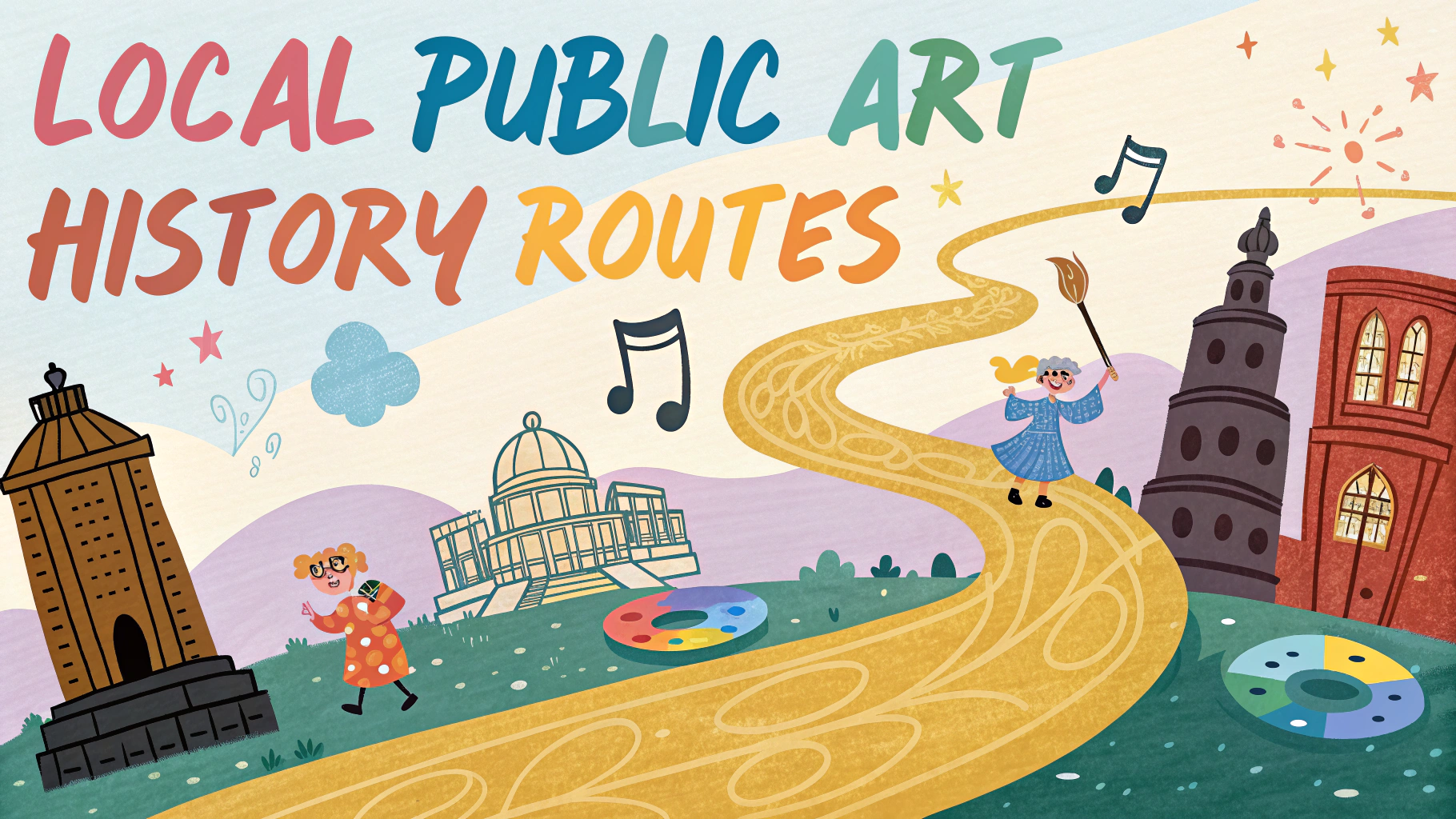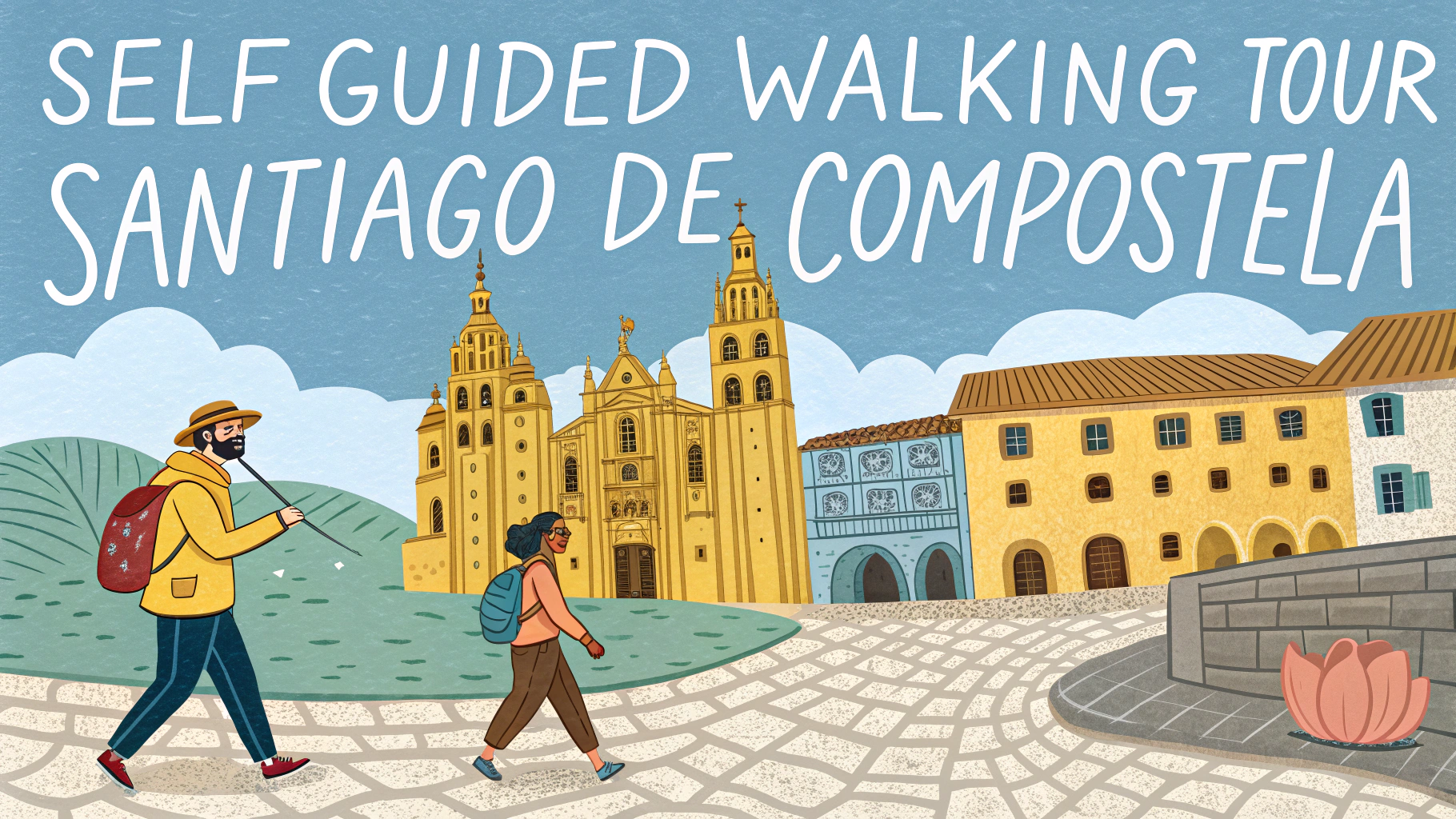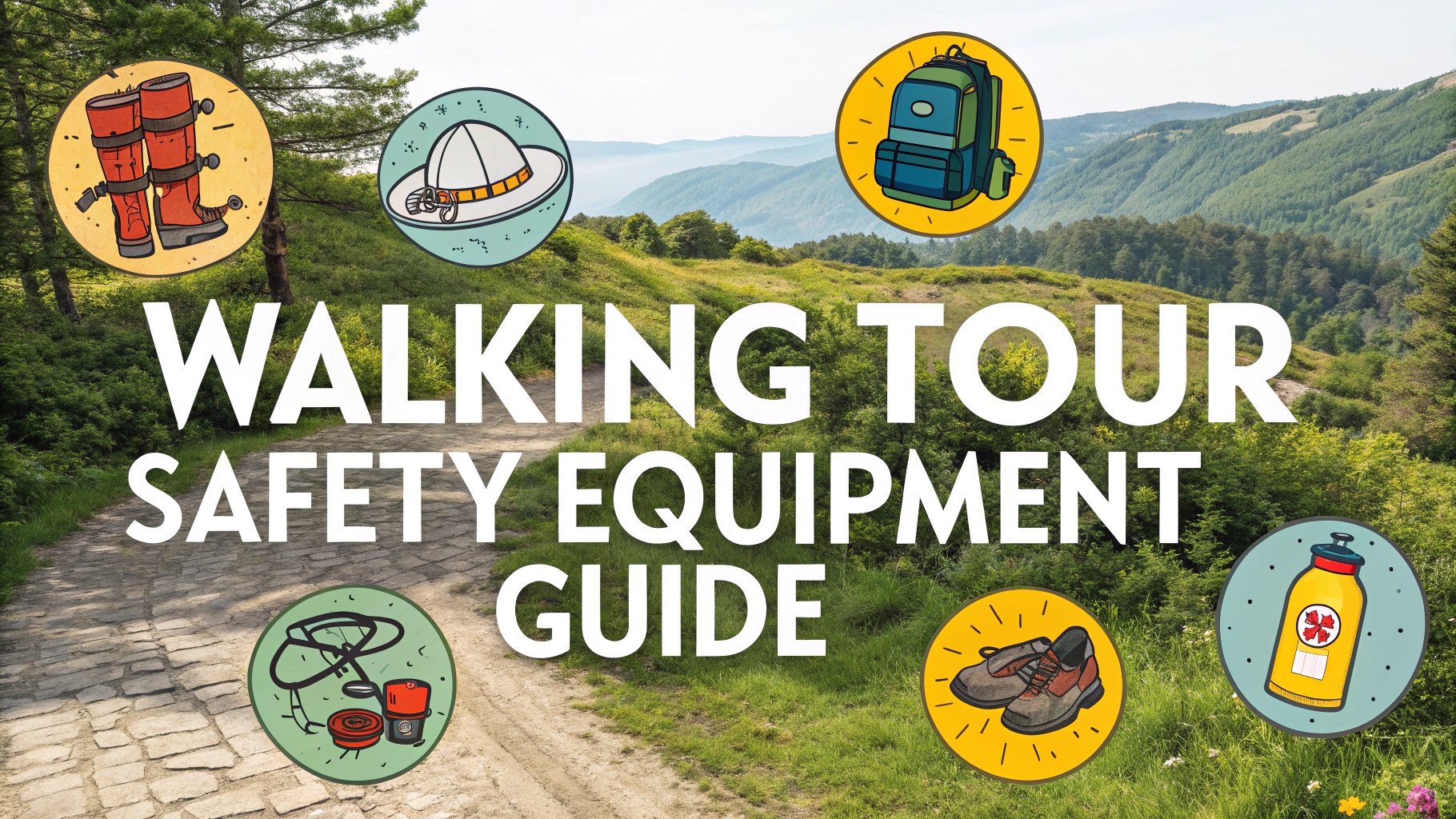Night walking tours offer a unique way to experience a city’s history, culture, and hidden gems after dark.
Safety First: Essential Precautions
- Always carry a flashlight or headlamp with spare batteries
- Wear reflective clothing or accessories
- Keep emergency contacts saved on your phone
- Share your planned route with someone you trust
- Stay in well-lit areas whenever possible
Planning Your Self-Guided Night Walk
Research your route during daylight hours first to identify potential hazards or areas to avoid.
Download offline maps to your phone as backup navigation.
Check local sunset times and plan to start your walk at dusk to adjust to decreasing light.
Recommended Equipment
- Lighting: LED headlamp (recommended: Black Diamond Spot 350)
- Navigation: Phone with offline maps + portable charger
- Safety: Personal alarm, whistle
- Comfort: Comfortable walking shoes, weather-appropriate clothing
Best Practices for Night Walking
- Walk against traffic if sidewalks aren’t available
- Use crosswalks and follow pedestrian signals
- Avoid wearing headphones or listening to music
- Keep valuables hidden and minimal
Popular Night Walking Routes
| City Area | Best Time | Duration |
|---|---|---|
| Historic District | 7-9 PM | 1-2 hours |
| Waterfront | 6-8 PM | 1 hour |
| City Center | 8-10 PM | 2 hours |
Emergency Resources
- Police Emergency: 911 (US)
- Non-Emergency Police: Check local listings
- Rideshare Apps: Uber, Lyft
- Local Taxi Services: Research before your walk
Consider joining local walking groups through platforms like Meetup.com for added safety and social interaction.
Weather Considerations
- Check weather forecasts before heading out
- Bring appropriate rain gear if needed
- Consider windchill factor in colder months
- Reschedule during severe weather conditions
Remember to trust your instincts – if something feels unsafe, choose an alternate route or end the walk early.
Photography Tips for Night Walking
- Use a tripod for stable long-exposure shots
- Adjust ISO settings for low-light conditions
- Focus on illuminated landmarks and architecture
- Consider bringing a small portable tripod
- Practice night photography techniques beforehand
Cultural Highlights
Night walks often reveal unique cultural aspects of a city, from evening rituals to local nightlife traditions.
What to Observe
- Restaurant and café culture
- Street performances and musicians
- Local gathering spots
- Architectural lighting
Seasonal Considerations
| Season | Special Considerations | Recommended Start Time |
|---|---|---|
| Summer | Later sunset, crowds | 8:30 PM |
| Winter | Early darkness, cold | 5:00 PM |
Conclusion
Night walking tours provide a distinctive perspective on urban exploration, combining adventure with cultural discovery. Success depends on thorough preparation, appropriate safety measures, and respect for local environments.
Key takeaways:
- Prioritize safety through proper preparation and equipment
- Respect local customs and areas
- Maintain awareness of surroundings
- Be flexible with plans based on conditions
Start with shorter routes and gradually expand your night walking experience as you become more comfortable with nocturnal navigation and safety protocols.
FAQs
- Is it safe to go on night walking tours alone?
No, it’s not recommended to do night walking tours alone. Always go with a companion or group, stick to well-lit areas, and inform someone of your route and expected return time. - What essential items should I bring on a night walking tour?
Carry a flashlight/headlamp, fully charged phone, comfortable walking shoes, reflective clothing, map/GPS, identification, and emergency contact information. - What are the best times to start a night walking tour?
The ideal time is during “blue hour” (just after sunset) or early evening when there’s still some residual light and more people are around, typically between 6-8 PM depending on the season. - How should I plan my night walking route?
Research well-lit areas, stick to populated streets, avoid isolated paths, map emergency exits/safe spaces, and choose routes near public transportation or taxi stands. - What areas should I avoid during night walking tours?
Avoid poorly lit streets, isolated areas, parks after dark, industrial zones, and neighborhoods known for high crime rates. - Should I book a guided tour or do a self-guided tour at night?
Guided tours are safer for night walking as they provide local expertise, safety in numbers, and often include historical context and storytelling. - What weather conditions should I check before a night walking tour?
Check temperature forecasts, precipitation chances, wind conditions, and moon phase for natural lighting. Avoid tours during severe weather warnings. - How can I enhance safety during self-guided night walks?
Share your location with trusted contacts, walk against traffic, stay alert to surroundings, avoid headphone use, and keep valuables concealed. - What’s the recommended duration for a night walking tour?
Most night walking tours should last 1-2 hours to prevent fatigue and maintain safety awareness. Consider shorter durations in unfamiliar areas. - What should I do in case of an emergency during a night walk?
Have emergency numbers saved, know locations of 24-hour businesses and police stations along your route, and carry a personal alarm or whistle.
